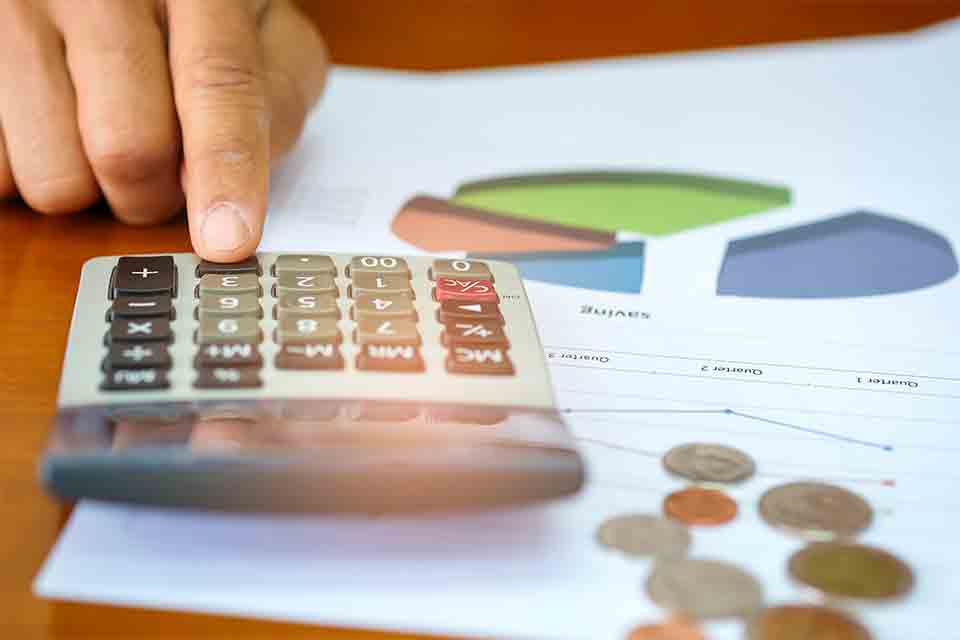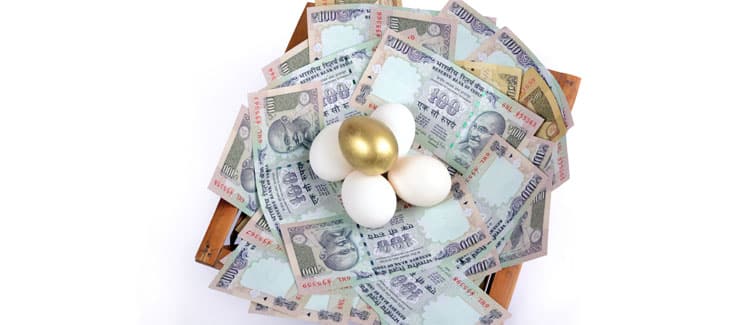Tax Rebate under Section 87A as per Union Budget 2025
With the latest updates announced in Union Budget 2025, Section 87A now offers substantially higher relief to eligible taxpayers: up to ₹60,000 for incomes up to ₹12 lakh under the new regime, and up to ₹12,500 under the old regime for incomes up to ₹5 lakh. This enhanced rebate highlights the government’s focus on supporting the middle class and simplifying the tax process.
What is the Section 87A Rebate for Financial Year (FY) 2025-26 and Assessment Year (AY) 2026-27?
Section 87A rebate is a provision under the Indian Income Tax Act that offers a tax benefit to resident individuals whose total taxable income does not exceed a specified threshold in a financial year. For the Financial Year 2025-26 (Assessment Year 2026-27), the updated details are:
Key Changes Announced in Union Budget 2025
- Section 87A Rebate (New Tax Regime):
- The maximum rebate has been increased to ₹60,000 for resident individuals with taxable income up to ₹12,00,000.
- Due to the standard deduction of ₹75,000 for salaried individuals, the effective no-tax threshold is ₹12,75,000 for salary earners.
- Marginal relief continues: If your income only slightly exceeds ₹12 lakh, any additional tax will not exceed the amount by which income exceeds ₹12 lakh.
- Section 87A Rebate (Old Tax Regime):
- No changes. The rebate remains ₹12,500 for individuals with taxable income up to ₹5,00,000.
New Tax Slabs for FY 2025-26 (Default Regime)
| Annual Income (₹) | Tax Rate (%) |
| Up to 4,00,000 | Nil |
| 4,00,001 – 8,00,000 | 5 |
| 8,00,001 – 12,00,000 | 10 |
| 12,00,001 – 16,00,000 | 15 |
| 16,00,001 – 20,00,000 | 20 |
| 20,00,001 – 24,00,000 | 25 |
| Above 24,00,000 | 30 |
Standard Deduction: ₹75,000 for salaried and pensioned taxpayers under the new regime.
What is the Amount of Rebate u/s 87A for FY 2025-26?
For the Financial Year 2025-26, the amount of tax rebate available under Section 87A of the Income Tax Act, 1961, will continue as before, which is as follows:
-
Old Tax Regime
-
Eligibility: Resident individuals with total taxable income up to ₹5,00,000.
- Maximum Rebate: ₹12,500 or your actual tax liability, whichever is lower.
- If your tax liability is less than ₹12,500, you only get rebate for the actual tax amount payable – so your tax payable becomes zero (exclusive of cess/surcharge).
-
-
New Tax Regime (Section 115BAC(1A))
- Eligibility: Resident individuals with total taxable income up to ₹7,00,000.
- Maximum Rebate: ₹25,000 or your actual tax liability, whichever is lower.
- If tax payable is less than ₹25,000, only tax amount is allowed as rebate, making tax payable zero.
- Marginal Relief: If total income slightly exceeds ₹7,00,000 and the tax payable is more than the excess income above ₹7,00,000, the rebate ensures your additional tax outgo does not exceed the income exceeding ₹7,00,000.
Section 87A Rebate Amount for FY 2025-26 (AY 2026-27) — Latest Updates
Old Tax Regime
- No change: Rebate remains ₹12,500 for incomes up to ₹5,00,000.
New Tax Regime
- Eligibility: Resident individuals with total taxable income up to ₹12,00,000.
- Maximum Rebate Increased: ₹60,000 or your actual tax liability, whichever is lower.
- For salaried taxpayers: If you claim the standard deduction of ₹75,000, you can have total income up to ₹12,75,000 and pay no tax under the new regime.
- Marginal Relief: Now applies to income slightly above ₹12,00,000; it limits the extra tax to the amount by which income exceeds ₹12,00,000
What are the Steps to Claim Rebate u/s 87A Rebate in ITR Filing?
To claim a tax rebate under Section 87A for the financial year 2025-2026, follow these steps:
Step 1: Determine your Gross Total Income for the financial year 2025-2026.
Step 2: Subtract any tax deductions you are eligible for, such as those for life insurance policies, investments, and other tax-saving investments.
Step 3: Calculate your total income after subtracting the tax deductions available under IT Act, 1961.
Step 4: Declare your Gross Income and tax deductions while filing your Income Tax Return (ITR).
Step 5: After filing your ITR, you can claim a tax rebate under Section 87A.
**You can claim deductions under Section 80C for investments like ULIPs, 80D for medical insurance, 80CCD for NPS contributions, and 80G for donations to reduce your total income under the old tax regime.
What is the Eligibility Criteria to Claim Income Tax Rebate u/s 87A for FY 2025 – 26 (AY 2026 – 27)?
You can claim a tax rebate under Section 87A of the Income Tax Act if you meet the following conditions:
- The taxpayer must be an individual resident in India.
- Your total income after reducing the deductions under Chapter VI-A (Section 80C, 80D, and so on) should not exceed ₹5 lakh as per the old tax regime.
- The tax rebate is limited to ₹12,500 under the old tax regime and ₹25,000 as per the new tax regime for FY 2025-26 (AY 2026-27).
- If your total tax payable is below these limits, you will not have to pay any tax.
- Senior citizens (aged 60 to 80 years) are eligible to claim the rebate.
- Super senior citizens (aged above 80 years) are not eligible to claim the rebate.
Illustration of Tax Rebate u/s 87A for FY 2025-26 (AY 2026-27)
Profile:
- Age: 61 years (senior citizen, but not super senior citizen)
- Pension Income: ₹5,000 per month (₹5,000 × 12 = ₹60,000)
- Long Term Capital Gains (LTCG) from equity-oriented funds: ₹4,70,000
Step 1: Basic Exemption Limit (Old Regime Used)
- For senior citizens (aged 60–79), the basic exemption limit is ₹3,00,000.
Step 2: Adjust Exemption Limit First Against Pension Income
- Pension income falls under “other income” and is first adjusted against the exemption limit:
- Exemption left after pension: ₹3,00,000 – ₹60,000 = ₹2,40,000
Step 3: Adjust Remaining Exemption Against LTCG
- LTCG left after using balance exemption: ₹4,70,000 – ₹2,40,000 = ₹2,30,000
Step 4: LTCG Tax Calculation (Listed Equity/Equity Mutual Fund)
- For FY 2025-26, LTCG on equity shares/equity-oriented mutual funds held for more than 12 months:
- First ₹1.25 lakh is exempt (raised from ₹1 lakh).
- LTCG taxable: ₹2,30,000 – ₹1,25,000 = ₹1,05,000
- Tax Rate: 12.5% (new rate applicable from FY 2024-25 onward)
- LTCG Tax: 12.5% of ₹1,05,000 = ₹13,125
Step 5: Section 87A Rebate
- Section 87A rebate is NOT available against tax on LTCG from equity shares/mutual funds (taxable under section 112A).
- Mr. Mohan cannot set off his tax liability on LTCG using Section 87A.
Step 6: Add Health & Education Cess
- Cess: 4% of tax
- Tax including cess: ₹13,125 + (4% of ₹13,125) = ₹13,125 + ₹525 = ₹13,650
Final Tax Liability for Mr. Mohan
| Particulars | Amount |
| LTCG taxable at 12.5% | ₹1,05,000 |
| Tax on LTCG | ₹13,125 |
| Add: Health & Education Cess | ₹525 |
| Total Tax Liability | ₹13,650 |
What is the Rebate Limit under Section 87A for Previous Financial Year?
The limits of income tax rebate under Section 87A of the IT Act, 1961, for previous financial year are mentioned below:
| Financial Year | Total Income Taxable Limit | Rebate under Section 87A |
|
2025-26 |
New Tax Regime: ₹12 lakhs | ₹60,000 |
| Old Tax Regime: ₹5 lakhs | ₹12,500 | |
|
2024-25 |
New Tax Regime: ₹7 lakhs | ₹25,000 |
| Old Tax Regime: ₹5 lakhs | ₹12,500 | |
|
2023-24 |
New Tax Regime: ₹7 lakhs | ₹25,000 |
| Old Tax Regime: ₹5 lakhs | ₹12,500 | |
| 2022-23 | ₹5 lakhs | ₹12,500 |
| 2021-2022 | ₹5 lakhs | ₹12,500 |
| 2020-2021 | ₹5 lakhs | ₹12,500 |
| 2019-2020 | ₹5 lakhs | ₹12,500 |
| 2018-2019 | ₹3.5 lakhs | ₹2,500 |
| 2017-2018 | ₹3.5 lakhs | ₹2,500 |
| 2016-2017 | ₹5 lakhs | ₹5,000 |
| 2015-2016 | ₹5 lakhs | ₹2,000 |
| 2014-2015 | ₹5 lakhs | ₹2,000 |
| 2013-2014 | ₹5 lakhs | ₹2,000 |
What are the Things to Remember Before Availing Rebates Under Section 87A?
Before availing the rebate under Section 87A, it is important to remember the following points:
-
Eligibility Criteria:
- Only resident individuals are eligible to avail of the rebate.
- Senior citizens aged 60 to 79 years can avail the rebate.
- Super senior citizens aged 80 years and above are not eligible for the rebate.
-
Rebate Amount:
- The rebate can be applied to the total tax before adding the health and education cess of 4%.
- The amount of rebate will be the lower of the limit specified under Section 87A or the total income tax payable (before cess).
-
Tax Regime:
- The rebate is available under both the old and the new tax regimes.
-
Applicable Tax Liabilities:
The rebate can be claimed against tax liabilities on:
- Normal income is taxed at the slab rate.
- Long-term capital gains under Section 112 of the Income Tax Act (excluding listed equity shares and equity-oriented schemes of mutual funds).
- Short-term capital gains on listed equity shares and equity-oriented schemes of mutual funds under Section 111A, taxed at a flat rate of 15%.
-
Non-Applicable Tax Liabilities:
- The rebate cannot be adjusted against tax on long-term capital gains on equity shares and equity-oriented mutual funds under Section 112A.
Conclusion
The tax rebate under Section 87A is a beneficial provision for resident individuals, including senior citizens aged between 60 and 79 years, to reduce their tax liability. By reducing the tax liability of eligible taxpayers, Section 87A encourages compliance and supports economic well-being, ultimately contributing to a fairer and more inclusive tax system.
FAQ's
-
Who is eligible for Section 87A rebate for FY 2025-26?
All resident individuals of India whose total taxable income after deductions does not exceed ₹12,00,000 (new regime) or ₹5,00,000 (old regime) are eligible. The rebate does not apply to NRIs or income taxed at special rates. -
What is the maximum rebate amount under Section 87A in FY 2025-26?
Depends on your chosen tax regime and deductions:- New tax regime: Up to ₹60,000 (for income up to ₹12,00,000)
- Old tax regime: Up to ₹12,500 (for income up to ₹5,00,000)
-
Does the Section 87A rebate apply to income taxed at special rates (like capital gains)?
No, Section 87A rebate is not available on tax applicable to income taxed at special rates, such as long-term capital gains on listed equity shares and mutual funds under Section 112A. -
Can senior citizens and super senior citizens claim Section 87A rebate?
Yes, resident individuals aged 60 years or more (senior citizens) are eligible. However, eligibility for super senior citizens (80+) depends on whether their total taxable income fits within the prescribed rebate thresholds.
˜The insurers/plans mentioned are arranged in order of highest to lowest first year premium (sum of individual single premium and individual non-single premium) offered by Policybazaar’s insurer partners offering life insurance investment plans on our platform, as per ‘first year premium of life insurers as at 31.03.2025 report’ published by IRDAI. Policybazaar does not endorse, rate or recommend any particular insurer or insurance product offered by any insurer. For complete list of insurers in India refer to the IRDAI website www.irdai.gov.in
*All savings are provided by the insurer as per the IRDAI approved insurance plan.
^The tax benefits under Section 80C allow a deduction of up to ₹1.5 lakhs from the taxable income per year and 10(10D) tax benefits are for investments made up to ₹2.5 Lakhs/ year for policies bought after 1 Feb 2021. Tax benefits and savings are subject to changes in tax laws.
¶Long-term capital gains (LTCG) tax (12.5%) is exempted on annual premiums up to 2.5 lacs.
++Source - Google Review Rating available on:- http://bit.ly/3J20bXZ


- SIP Calculator
- Income Tax Calculator
- Compound Interest Calculator
- NPS Calculator
- Show More Calculator
Income Tax articles
Explore the popular searches and stay informed
- LIC
- Investment Plan
- Annuity Plan
- Child Plan
- Pension Plan
- ULIP Plan
- Child Investment Plan
- SIP
- SIP Calculator
- SBI SIP
- ULIP Calculator
- Sukanya Samriddhi Yojana
- Best SIP Plans
- Retirement Planning
- SBI SIP Calculator
- HDFC SIP Calculator
- Sukanya Samriddhi Yojana Interest Rate
- NPS Interest Rate
- Deferred Annuity Plans
- SBI Annuity Deposit Scheme Calculator
- Immediate Annuity Plans
- Post Office Child Plan
- Prime Minister Schemes For Boy Child
- Government Schemes for Girl Child
- 50k Pension Per Month
- Atal Pension Yojana Calculator
- Best Pension Plan in India
- CIBIL Score
- 1 Crore Term Insurance
- Best Term Insurance Plan
- Term Insurance for Women
- Term Insurance for NRI
- Term Insurance
- Term Insurance Calculator
- Life Insurance
- Term Insurance with Return of Premium
- Whole Life Insurance
- Term Insurance vs Life Insurance
- What is Term Insurance
- Life Insurance Calculator
- 5 Crore Term Insurance
- 2 Crore Term Insurance
- 50 Lakh Term Insurance
- Term Insurance for Housewife
- Benefits of Term Insurance
- Term Insurance Terminology
- Medical Tests for Term Insurance
- Term Insurance for Self Employed
- Claim Settlement Ratio
- 10 Crore Term Insurance
- Term Insurance for Smokers
- 1.5 Crore Term Insurance
- Zero Cost Term Insurance
- FIRE Calculator















